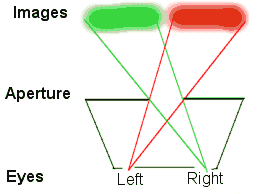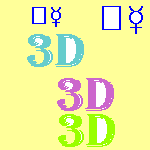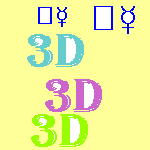Stereo pairs are fused without optical aid in two ways, called X (cross eye) and U (parallel).
X view: Big images are fused by going cross-eyed until the two pictures superimpose. Converging the eyes makes them focus close, and it is necessary to wait until the brain adjusts the focus for distant viewing again. Suddenly the pictures fuse as a 3D image. It is possible to look around the picture with the eyes locked into the correct format.
U view: Small images are seen the same way as in a 3D viewer, using U or parallel vision. The eyes are relaxed to look into the distance until the images fuse, then refocused by the brain.
Many people cannot easily make their eyes diverge from parallel because that is all they have to do to see into the far distance.
Many people can fuse Holmes card stereo pairs without the viewer (which uses base out prism lenses to increase divergence). The pictures are 76mm apart, which defines the for-ground window. The infinity points are always separated more than the window. 83mm infinity separation is easily fused by people with 68mm inter-ocular distance, using free U viewing at 30cm viewing distance. The process is easier if the for-ground is fused first, then the distant objects follow painlessly.
If the separation is too great for your eyes, (double vision), just move further away from the computer screen and the required angle will decrease.
[Stereo viewer:] The big advantages of a viewer for U stereo:
-
the two magnifying glasses, which make refocusing the eyes unnecessary.
-
A septum separates the two images, so each eye only sees the picture it is supposed to.
-
Some stereo viewers include prism lenses to help diverge the light path.
Bigger images can be U viewed if mirrors or prisms are used. (E.g. the [Cazes viewer,] which uses 4 mirrors, and works very well on a computer screen.)
[M view] is not quite free viewing, but involves an ordinary mirror or prism. It is described on a separate page.
U view on a computer screen
It is easy to set up stereo pairs for parallel viewing on a computer screen, but the result is not optimal without an optical viewer.
-
For U view, present your face close to the computer screen, relax your eyes, slowly move back.
-
The images will fuse but are blurred because relaxed eyes focus into the distance.
-
Keep the images fused until your brain works out how to adjust the focus.
-
You will see three pictures.
-
Now tilt your head until the three pictures are exactly aligned horizontally. (Missing this step is a potent cause for failure.)
-
Concentrate on the central picture and ignore the others. Only the central picture is in 3D.
There is no way to adjust eye focus consciously. The focus muscles are out of control and work involuntarily, the same way your intestines push dinner along in your abdomen, without conscious thought. Patience is the answer.
Computer screen resolution is limited.
A magnifying glass just shows the individual pixels, so a magnifying stereo-viewer is a waste of time on a computer. The lower magnification from a [Holmes viewer ] or a plastic lorgnette viewer is acceptable on a computer.
Low power hobby glasses are helpful because parallel eyes are normally focused at infinity and the glasses correct that. (Weak, 1 diopter magnifying glasses in a frame - get them from The Warehouse in New Zealand.)
![]() Press
to practice U and X viewing
Press
to practice U and X viewing
![]() Press
to see Komrad Cave in U stereo
Press
to see Komrad Cave in U stereo






